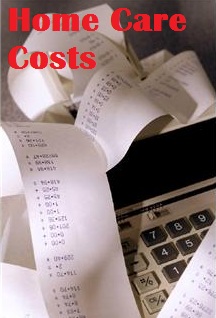Any service that charges an hourly rate can be tough to evaluate from a budget perspective. When looking at home care, how can a family evaluate the difference between affordable home care and services that are going to be beyond their means?
In addition to 
For example, when evaluating affordable home care, rather than comparing hourly rates, which are typically very similar for businesses within a geographic area, find out what it would take to fill your current needs. In other words, if “I want someone to come drive me to appointments which would take approximately 3 hours/week, prepare four or five meals, and arrange medications for the week, how long will that take/what will it cost?” This number will mean a lot more to you than an hourly rate and will better help you determine where help is most needed and create that reosurce map to make the best use of your resources.
Here are a few examples that EasyLiving Home Health Care provides to our clients about our costs and what can be accomplished for a particular budget:
For about $56, a home caregiver can help you with tasks such as: helping you get up/ready/dressed for the day, making up the bed and tidying your room, doing a load of laundry, folding and puting things away as well as some ironing, prepare breakfast and a meal to eat later, and tidy your living area. So, all of those tasks could be accomplished in a once/week visit for $224/month. You can substitute tasks based on your needs, but this paints a picture of just how much can be accomplished on a particular budget.
Another example is for someone being discharged from the hospital or leaving surgery. For a similar price, around $65, a home caregiver can pick you up and take you home from the location (helping you safely in and out of the car, loading equipment like a walker), pick up your presecriptions or items needed from the store, get you settled at home with the items you need, put away your groceries and organize (as well as clean out any spoiled food, take out the garbage, etc.), make your bed with clean linens, prepare a meal and do a load of laundry.
Any type of home care tasks can be broken down in to time frames and can help you get an idea of what is possible for the costs. Rather than puzzling over an hourly rate, doing the math to put together the care plan can really help you evaluate the affordability of home care. This will better what you can get for the money.
Here are a few tips you can use when evaluating affordability of home care services:
- List out the target tasks with which you would like help and ask the home health care agency to come up with a sample plan and suggestion of hours/schedule.
- Work with the home care company to modify the plan to better suit your needs. For example, you may determine after looking at the costs that you will need to reduce the time. You can go over the tasks with the home care company to determine priorities or figure out a better way to schedule or use resources (such as using a public transportation service for some rides while using the home caregiver for escorted transportation or scheduling appointments together).
- Though breaking out the costs into time chunks is most effective for budgeting, costs are hourly so that you have the flexibility to modify the care plan…using more time if extra support is needed or modifying the time used as your needs change.
- Seek the assistance of the home health agency’s care advisors about budgeting and resources. They can work with you on creating a plan, as well as accessing resources such as long-term care insurance or Veterans benefits.
For a breakdown of care costs or help from our care advisors about budgeting and affording senior home care, give us a call any time at 727-448-0900 or click below to request a call:

